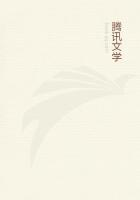The earth, as a rule, is mythically averred to have grown out of some original matter, perhaps an animal, perhaps an egg which floated on the waters, perhaps a handful of mud from below the waters. But this conception does not exclude the idea that many of the things in the world, minerals, plants and what not, are fragments of the frame of a semi-supernatural and gigantic being, human or bestial, belonging to a race which preceded the advent of man. Such were the Titans, demi-gods, Nurrumbunguttias in Australia. Various members of this race are found active in myths of the creation, or rather the construction, of man and of the world. Among the lowest races it is to be noted that mythical animals of supernatural power often take the place of beings like the Finnish Wainamoinen, the Greek Prometheus, the Zulu Unkulunkulu, the Red Indian Manabozho, himself usually a great hare.
Macrobius, Saturnal., i. xx.
The ages before the development or creation of man are filled up, in the myths, with the loves and wars of supernatural people. The appearance of man is explained in three or four contradictory ways, each of which is represented in the various myths of most mythologies. Often man is fashioned out of clay, or stone, or other materials, by a Maker of all things, sometimes half-human or bestial, but also half-divine. Sometimes the first man rises out of the earth, and is himself confused with the Creator, a theory perhaps illustrated by the Zulu myth of Unkulunkulu, "The Old, Old One". Sometimes man arrives ready made, with most of the animals, from his former home in a hole in the ground, and he furnishes the world for himself with stars, sun, moon and everything else he needs. Again, there are many myths which declare that man was evolved out of one or other of the lower animals. This myth is usually employed by tribesmen to explain the origin of their own peculiar stock of kindred. Once more, man is taken to be the fruit of some tree or plant, or not to have emerged ready-made, but to have grown out of the ground like a plant or a tree. In some countries, as among the Bechuanas, the Boeotians, and the Peruvians, the spot where men first came out on earth is known to be some neighbouring marsh or cave. Lastly, man is occasionally represented as having been framed out of a piece of the body of the Creator, or made by some demiurgic potter out of clay. All these legends are told by savages, with no sense of their inconsistency.
There is no single orthodoxy on the matter, and we shall see that all these theories coexist pell-mell among the mythological traditions of civilised races. In almost every mythology, too, the whole theory of the origin of man is crossed by the tradition of a Deluge, or some other great destruction, followed by revival or reconstruction of the species, a tale by no means necessarily of Biblical origin.
In examining savage myths of the origin of man and of the world, we shall begin by considering those current among the most backward peoples, where no hereditary or endowed priesthood has elaborated and improved the popular beliefs. The natives of Australia furnish us with myths of a purely popular type, the property, not of professional priests and poets, but of all the old men and full-grown warriors of the country. Here, as everywhere else, the student must be on his guard against accepting myths which are disguised forms of missionary teaching.
Taplin, The Narrinyeri. "He must also beware of supposing that the Australians believe in a creator in our sense, because the Narrinyeri, for example, say that Nurundere 'made everything'.
Nurundere is but an idealised wizard and hunter, with a rival of his species." This occurs in the first edition, but "****** all things" is one idea, wizardry is another.
In Southern Australia we learn that the Boonoorong, an Australian coast tribe, ascribe the creation of things to a being named Bun-jel or Pund-jel. He figures as the chief of an earlier supernatural class of existence, with human relationships; thus he "has a wife, WHOSE FACE HE HAS NEVER SEEN," brothers, a son, and so on. Now this name Bun-jel means "eagle-hawk," and the eagle-hawk is a totem among certain stocks. Thus, when we hear that Eagle-hawk is the maker of men and things we are reminded of the Bushman creator, Cagn, who now receives prayers of considerable beauty and pathos, but who is (in some theories) identified with kaggen, the mantis insect, a creative grasshopper, and the chief figure in Bushman mythology. Bun-jel or Pund-jel also figures in Australian belief, neither as the creator nor as the eagle-hawk, but "as an old man who lives at the sources of the Yarra river, where he possesses great multitudes of cattle". The term Bun-jel is also used, much like our "Mr.," to denote the older men of the Kurnai and Briakolung, some of whom have magical powers. One of them, Krawra, or "West Wind," can cause the wind to blow so violently as to prevent the natives from climbing trees; this man has semi-divine attributes. From these facts it appears that this Australian creator, in myth, partakes of the character of the totem or worshipful beast, and of that of the wizard or medicine-man. He carried a large knife, and, when he made the earth, he went up and down slicing it into creeks and valleys. The aborigines of the northern parts of Victoria seem to believe in Pund-jel in what may perhaps be his most primitive mythical shape, that of an eagle.















